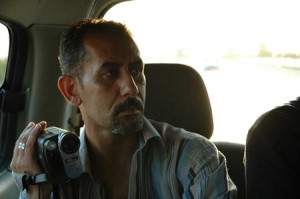 While making the Iraq-based documentary Gunner Palace in 2003, cameraman Michael Tucker was embedded with U.S. soldiers raiding what they thought was a bomb factory. What they found was four brothers in their family home – and no evidence. One brother spoke straight to Tucker’s camera. He didn’t seem angry at the soldiers in his garden but bitterly disappointed. Now Tucker tells the rest of his story.
While making the Iraq-based documentary Gunner Palace in 2003, cameraman Michael Tucker was embedded with U.S. soldiers raiding what they thought was a bomb factory. What they found was four brothers in their family home – and no evidence. One brother spoke straight to Tucker’s camera. He didn’t seem angry at the soldiers in his garden but bitterly disappointed. Now Tucker tells the rest of his story.
He was Yunis Khatayer Abbas, an Iraqi journalist working for CNN and other foreign stations. He had been tortured as a dissident under Saddam Hussein and initially welcomed the Americans as liberators. He had no links to the insurgents. Yet, instead of being released, Yunis disappeared into the machinery of the occupation. For nine months, he and two of his brothers were held without charge at Camp Ganci, the low-risk section of Abu Ghraib. With the same clarity that he held the camera’s attention in Gunner Palace, Yunis explains the increasingly bizarre and terrible treatment he and his fellow inmates suffered. Yet he also praises the humanity of American guards who tried to provide some comfort to the prisoners.
(A version of this story previously appeared at AustinChronicle.com)
Continue reading Interview: Michael Tucker on The Prisoner, Or: How I Planned to Kill Tony Blair (2007)
